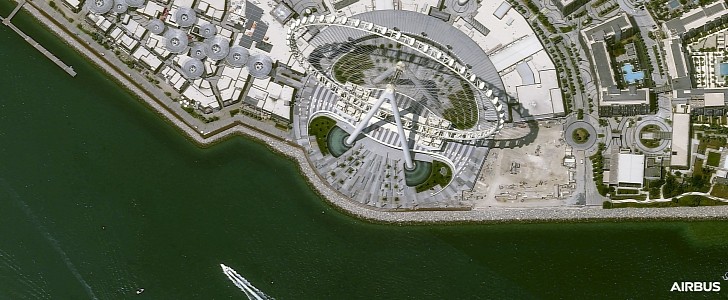The Pleiades Neo 3 satellite proves that it can deliver the highest precision imagery available today, after sending the first images since it was orbited, a few months ago.
It’s impressive to see some of the greatest cities all around the world, through the “eyes” of a satellite, and observe all the details. It’s proof that satellite technology has come a long way and it keeps evolving. As its name suggests, the Pleiades Neo 3 joined the first-generation Airbus satellites, which were orbited 10 years ago, but it’s the first of the new generation constellation, consisting of 4 satellites.
This new generation Pleiades Neo was developed with innovation in mind. It’s compact, with a lightweight optical instrument made of silicon carbide, which can deliver images at an impressive 30 cm native resolution, much higher than the previous generation.
This means extremely detailed images, where even small elements like cars or road markings, are visible. And if you’re curious to know how much imagery it can send each day, it’s equal to the surface of Spain.
This new satellite is also very good at delivering highly accurate geolocation data, which makes it useful for all sorts of activities, including monitoring of strategic sites. Also, thanks to its inter-satellite links with Airbus’ SpaceDataHighway (EDRS) geostationary spacecraft, the images can be downloaded in just 40 minutes after the acquisition request.
In fact, images can be sent even in just a few minutes after the request, in case of emergencies like natural disasters.
While Pleiades Neo performs its duty, the Airbus ground-system is takes over the data that it receives is equally innovative as the satellite. Real-time image processing and easy data access are possible thanks to the advanced big data and cloud technologies.
The Pleiades Neo 4 will also be launched later this year, while the last 2 of the constellation will be orbited in 2022. And it doesn’t stop there, because Airbus is already researching the next generation of satellites, with infrared being the key technology.
This new generation Pleiades Neo was developed with innovation in mind. It’s compact, with a lightweight optical instrument made of silicon carbide, which can deliver images at an impressive 30 cm native resolution, much higher than the previous generation.
This means extremely detailed images, where even small elements like cars or road markings, are visible. And if you’re curious to know how much imagery it can send each day, it’s equal to the surface of Spain.
This new satellite is also very good at delivering highly accurate geolocation data, which makes it useful for all sorts of activities, including monitoring of strategic sites. Also, thanks to its inter-satellite links with Airbus’ SpaceDataHighway (EDRS) geostationary spacecraft, the images can be downloaded in just 40 minutes after the acquisition request.
In fact, images can be sent even in just a few minutes after the request, in case of emergencies like natural disasters.
While Pleiades Neo performs its duty, the Airbus ground-system is takes over the data that it receives is equally innovative as the satellite. Real-time image processing and easy data access are possible thanks to the advanced big data and cloud technologies.
The Pleiades Neo 4 will also be launched later this year, while the last 2 of the constellation will be orbited in 2022. And it doesn’t stop there, because Airbus is already researching the next generation of satellites, with infrared being the key technology.








